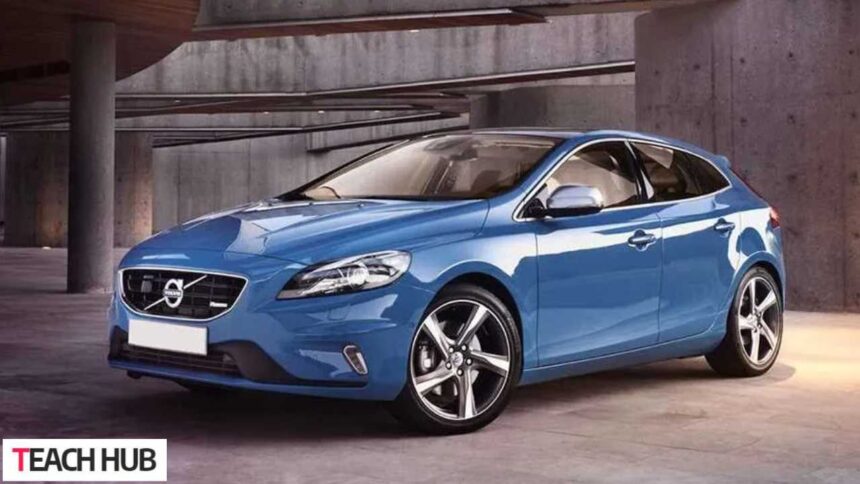Despite its discontinuation, the Volvo V40 remains a topic of interest among car enthusiasts and potential buyers. Many wonder about its value, performance, and comparison with current models. The mystery surrounding its market exit continues to spark curiosity.
Here, we’ll delve into the Volvo V40’s enduring appeal, exploring its features, efficiency, and luxury status to see how it compares today. We’ll also uncover the reasons behind its discontinuation and legacy in the Volvo lineup.
Read on to discover what made the Volvo V40 a unique proposition in its time and why it might still be a worthy choice. Whether you’re considering a used V40 or just interested in Volvo’s evolution, this guide has all the insights you need.
Is the Volvo V40 Worth It?
Despite being discontinued, the Volvo V40 remains a compelling option for many car buyers. This vehicle, known for its sleek design and practicality, has often been a favorite in the compact car segment.
Whether you are a city dweller needing a dependable daily driver or a car enthusiast appreciating its Scandinavian engineering, the V40 offers a blend of performance and style that still holds appeal.
Overview of Volvo V40 Features
The Volvo V40 was designed with both comfort and functionality in mind, making it a standout in its class. It features a well-thought-out cabin with quality materials and an ergonomic layout prioritizing driver and passenger comfort.
The exterior combines aesthetic simplicity with the distinctive Volvo design language, including the iconic Thor’s Hammer headlights, which add to its stylish look and enhance visibility.
Performance Specifications
Under the hood, the Volvo V40 has various engine options, from the efficient 1.6-liter diesel to the more powerful 2.0-liter turbocharged variants, catering to different driving preferences and needs.
The car is praised for its sharp handling and smooth ride, balancing sporty responsiveness with day-to-day comfort. Its powertrain options are engineered to offer a satisfying mix of power and fuel efficiency.
Safety and Technology
Safety, a paramount aspect of Volvo’s brand identity, is robust in the V40. It includes advanced safety features like City Safety, which automatically applies brakes at lower speeds if a collision is imminent, and the Pedestrian Airbag, a pioneering feature at the time.
On the technology front, the V40 boasts an intuitive infotainment system and connectivity options that support a seamless digital experience, keeping you connected on the go.
Also Read: World of Jack and Jones: Your Ultimate Style Guide
Consumer and Expert Reviews
Both consumers and automotive experts have lauded the Volvo V40 for its driving dynamics, safety features, and overall value. Reviews often highlight its comfort during long journeys and its agility in urban environments.
Critics appreciate its blend of performance and luxury, which is not always easy to find in the compact segment. The positive reception it continues to receive underscores its relevance even years after production has ended.
Awards and Recognitions
The Volvo V40 has received several accolades over its production span, emphasizing its safety innovations and design. It was particularly recognized for its environmental considerations, such as the powerful and eco-friendly Drive-E engines.
These awards not only celebrate the vehicle’s technical achievements but also reinforce its position as a leader in its category during its market presence.
Why Was the Volvo V40 Discontinued?
The discontinuation of the Volvo V40 in 2019 left many consumers and industry observers questioning the reasons behind this decision. As a model that had carved out a niche in the compact car segment, the V40’s cessation was influenced by various strategic and market-driven factors.
The Decision Behind the Discontinuation
Volvo’s decision to discontinue the V40 was not made lightly. It was influenced by evolving market demands, shifting consumer preferences, and the company’s strategic shift towards electrification and SUVs. As the market began favoring more significant, versatile vehicles, the appeal of compact hatchbacks like the V40 diminished, prompting Volvo to reassess its lineup.
Market Trends
Over the past decade, the automotive market has seen a significant shift towards SUVs and crossover vehicles. These vehicles offer greater versatility and often come with enhanced safety features and more space, making them more appealing to a broader audience. The trend is also moving towards electric vehicles, which has reshaped automakers’ priorities, including Volvo’s.
Volvo’s Corporate Strategy
Volvo has been a front-runner in environmental and safety innovations, with a clear strategic focus on sustainability and electrification.
The discontinuation of the V40 allowed Volvo to reallocate resources to develop electric vehicles and new models that align with global demands for cleaner, more sustainable transportation options. This strategy reflects Volvo’s commitment to transitioning to a more sustainable automotive industry.
Impact of the Discontinuation on the Market
The discontinuation of the Volvo V40 had several impacts on the market. Firstly, it underscored the industry’s shift from traditional car segments to SUVs and electrified models, influencing consumer choices and expectations.
For Volvo, it marked a strategic repositioning towards future-proofing their vehicle offerings. While the V40 was popular, its phase-out made room for innovative models that promise to drive Volvo’s sustainability agenda forward, maintaining its reputation as a leader in automotive safety and environmental responsibility.
Also Read: Why Am I Getting a Package from Auctane ShipStation?
What’s the Price of a Volvo V40?
The cost of a Volvo V40 varies significantly based on several factors, including the model year, the vehicle’s condition, and additional features. Understanding these price dynamics is crucial for potential buyers considering this model.
Pricing Overview
Generally, the price of the Volvo V40 depends on whether you are purchasing a new or used vehicle, its age, and its condition. Since the model was discontinued, new models are no longer available directly from Volvo, but dealer stocks may still have new, unsold units at varying prices. Used V40s are more commonly available and can offer considerable savings.
New vs. Used V40 Prices
For the last new Volvo V40 models sold, prices could range considerably based on the trim level and options included. On the other hand, used V40 prices are affected by factors such as mileage, overall condition, and service history.
Typically, a used V40 can cost anywhere from a lower end for older models with higher miles to a higher end for more recent, well-maintained examples.
Factors Influencing the Price
Several factors can influence the price of a Volvo V40. These include the vehicle’s age, mileage, condition at the time of sale, and market demand for this type of car. Also, prices can vary depending on where the car is being sold and the number of similar vehicles available in that area.
Regional Price Variations
The price of a Volvo V40 can differ widely depending on the region. In areas where compact cars are in higher demand, prices might be higher. Additionally, local taxes and import duties can significantly affect the final purchase price. Comparing prices across different regions can sometimes yield significant savings.
Optional Features and Their Costs
Optional features available for the V40, such as enhanced safety packages, premium audio systems, and advanced navigation features, influence the final price.
While increasing the cost, these features add considerable value and appeal, making the car more desirable and sometimes influencing its resale value. Buyers must consider essential features and assess their impact on the overall cost.
Are Volvo V40s Still Made?
The Volvo V40 was officially discontinued in 2019. This model was phased out as part of Volvo’s broader strategy to focus on larger, more environmentally friendly vehicles like hybrids and electric models.
Production Status
The last Volvo V40 models rolled off the assembly line in 2019, concluding its production cycle. While new units are no longer being manufactured, the model remains available on the used car market and is popular among those seeking a reliable and stylish compact car.
Alternatives to the Volvo V40
For those interested in alternatives similar to the V40, Volvo offers models like the Volvo XC40, which provides a compact SUV experience with upgraded technology and safety features. Other manufacturers offer competitive alternatives such as the Audi A3, BMW 1 Series, and Mercedes-Benz A-Class, all of which provide similar levels of luxury and performance in a compact form.
Is a Volvo V40 a Luxury Car?
While the Volvo V40 is often categorized as a premium compact car, it straddles the line between mainstream and luxury. Its high-end materials, advanced features, and sophisticated design align with luxury standards but are affordable.
Luxury Features of the Volvo V40
The V40 boasts several luxury features, including a high-quality interior with leather upholstery options, advanced infotainment systems, and a comprehensive suite of safety features that Volvo is known for. These elements contribute to a more luxurious driving experience typical of higher-end vehicles.
Volvo V40 vs. Other Luxury Competitors
Compared to its luxury competitors like the BMW 1 Series and Audi A3, the Volvo V40 offers a unique blend of safety and design. Although it may lack some of the sportiness of these rivals, it compensates with superior safety features and a more comfortable ride, making it a worthy contender in the luxury compact segment.
Also Read: Pi Network’s Puzzling Code and the Significance of 314159u
Is the Volvo V40 Fuel Efficient?
Fuel efficiency is one of the Volvo V40’s strong suits, especially in the diesel and hybrid variants. Its performance in this area makes it a practical choice for those looking to minimize fuel costs and environmental impact.
Fuel Efficiency Analysis
The Volvo V40 is known for its efficient fuel use, with several engine options designed to optimize fuel economy without compromising performance. This efficiency is achieved through advanced engine technologies and aerodynamic design.
Engine Options and Their Efficiency
The V40 was available with a variety of engines, including 1.6- and 2.0-liter diesel engines known for their fuel efficiency and a T5 petrol engine that offers more power at a higher fuel cost. The D2 diesel variant, in particular, is recognized for its low fuel consumption and reduced CO2 emissions.
Comparative Analysis With Similar Models
Compared to other cars in its class, the Volvo V40 is very fuel efficient. Models like the Audi A3 and BMW 1 Series offer similar fuel economy rates. However, the V40 often edges out competitors with its diesel options, making it an attractive option for fuel-conscious drivers.
Conclusion
Throughout this article, we’ve explored various facets of the Volvo V40, from its impressive range of features and performance specifications to its fuel efficiency and the reasons behind its discontinuation. The V40 stands out for its blend of luxury and practicality, offering advanced safety technologies and a comfortable driving experience that aligns with Volvo’s reputation for quality and reliability. Despite its production ending in 2019, the V40 remains a popular choice on the used car market, admired for its economical operation and stylish design.
The Volvo V40 has left a significant mark on the compact car segment. Its commitment to safety and luxury at an accessible price point has set a benchmark that continues to influence the industry. The transition from the V40 reflects broader shifts in consumer preferences and technological advancements, showcasing Volvo’s proactive adaptation to the evolving automotive landscape.
For those intrigued by the enduring charm of the Volvo V40 or interested in discovering more about Volvo’s current lineup, visiting a local showroom could provide valuable insights and a closer look at comparable newer models. Additionally, exploring further articles on Volvo’s innovations and upcoming vehicles can enrich your understanding of where the automotive industry is headed. Whether you are considering a used V40 or a new Volvo model, the journey towards finding the perfect car for your needs is just a showroom visit or a click away.
(FAQ)
Is the Volvo V40 a good investment for a used car?
Yes, the Volvo V40 is considered a good investment for a used car. It offers a solid combination of reliability, safety, and comfort. With its durable build and reputation for longevity, it maintains a substantial resale value compared to other vehicles in its class.
What are the common maintenance issues with the Volvo V40?
Everyday maintenance issues with the Volvo V40 typically include wear and tear on brake pads and discs, issues with the electrical components such as the infotainment system, and regular maintenance of the engine and transmission systems to prevent more significant problems.
Can I still find parts for the discontinued Volvo V40?
Yes, parts for the Volvo V40 are still widely available. Volvo continues to support its discontinued models with a supply of replacement parts, and many aftermarket suppliers also stock compatible parts, ensuring that V40 owners can maintain and repair their vehicles effectively.
How does the Volvo V40 compare safety to other Volvo models?
The Volvo V40 performs well in safety comparisons with other Volvo models. It features many of the brand’s pioneering safety technologies, like City Safety automatic braking. It often receives high ratings in safety tests, reflecting Volvo’s commitment to vehicle safety across its model range.
What should I look for when buying a used Volvo V40?
Check for comprehensive service history, signs of consistent maintenance, and any evidence of major repairs. Inspect the vehicle for wear and tear, especially in the interior and key mechanical parts. It’s also advisable to have a trusted mechanic perform a pre-purchase inspection.
Also Read: A Look at Spartan Capital Securities LLC Broker Jordan Meadow



